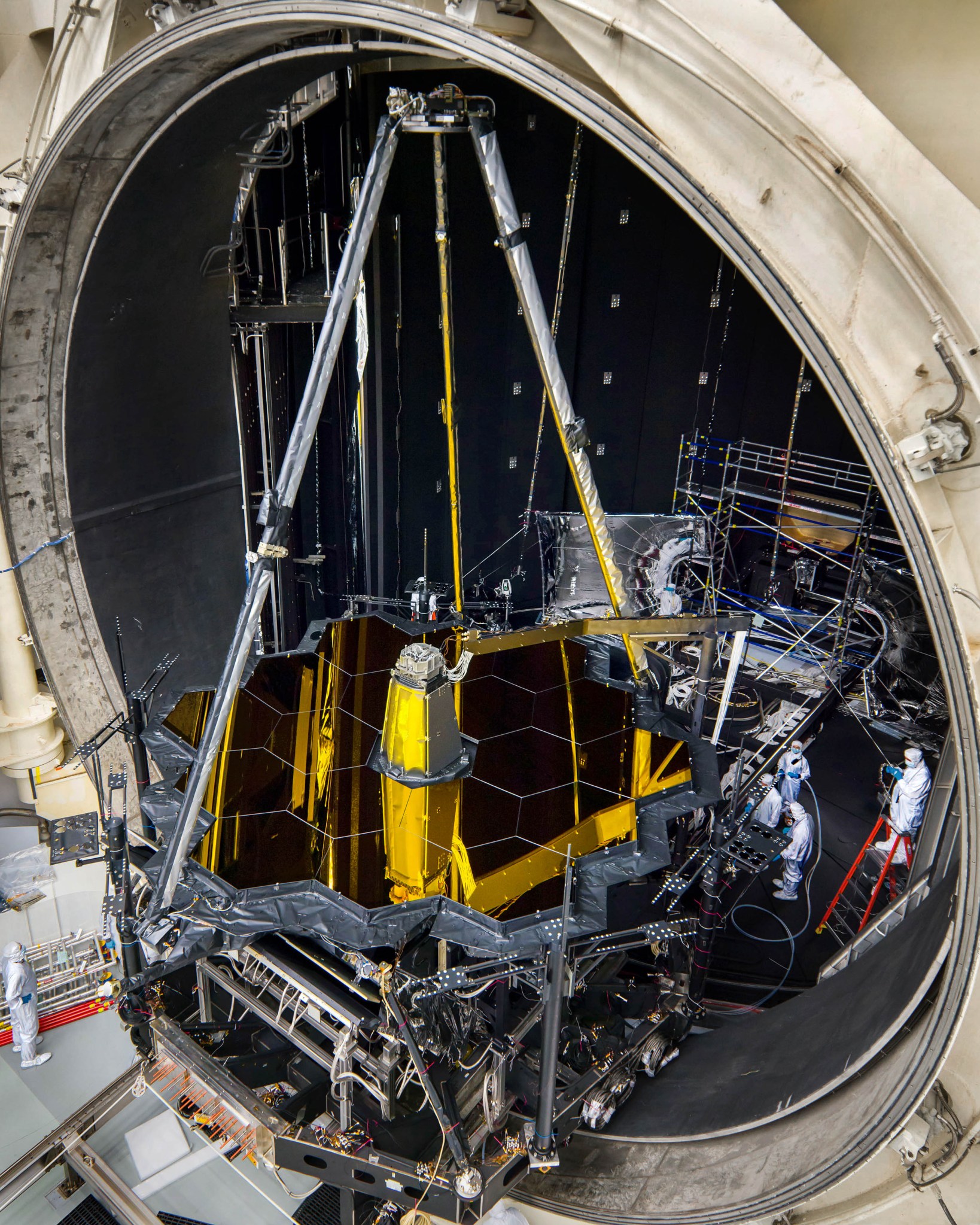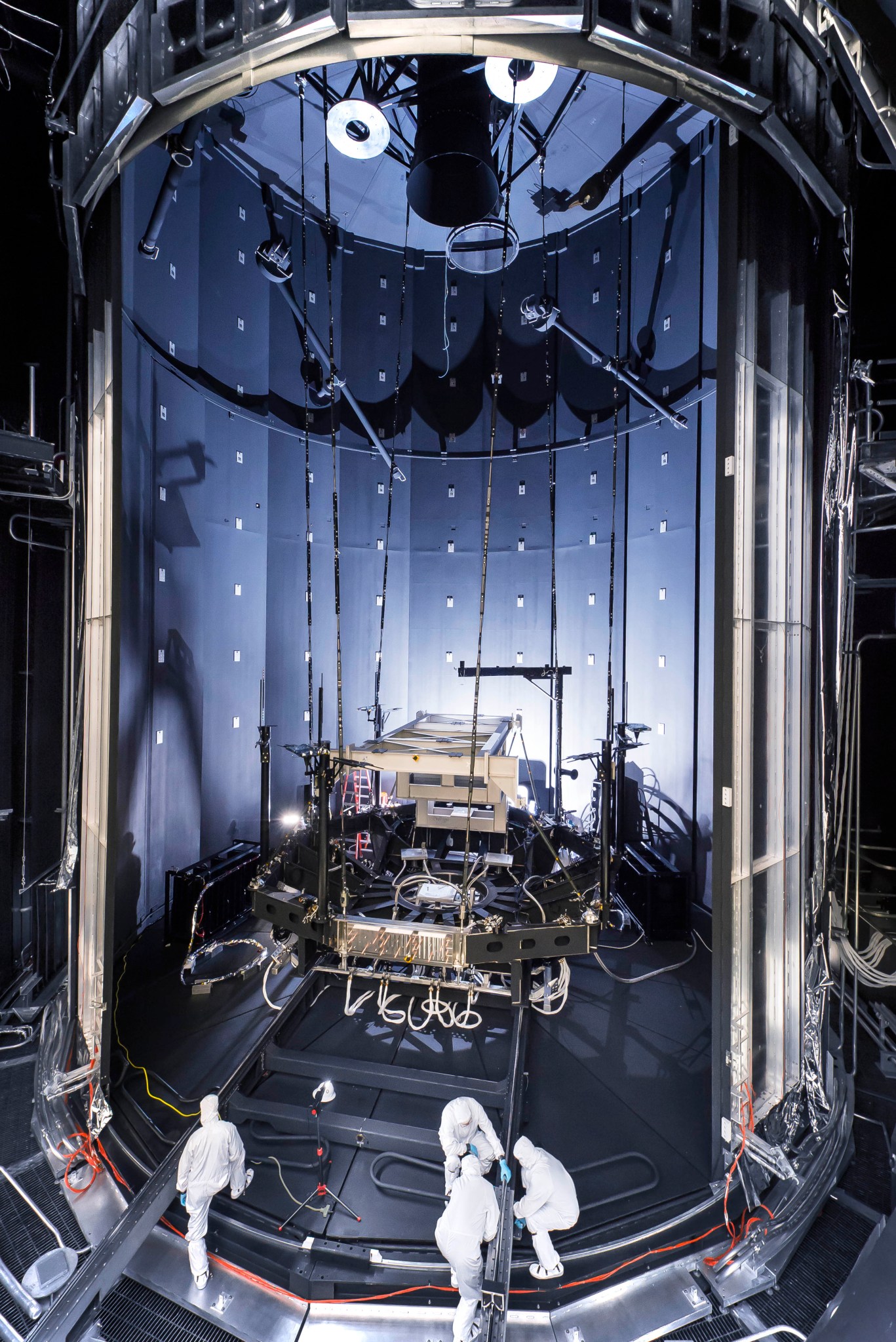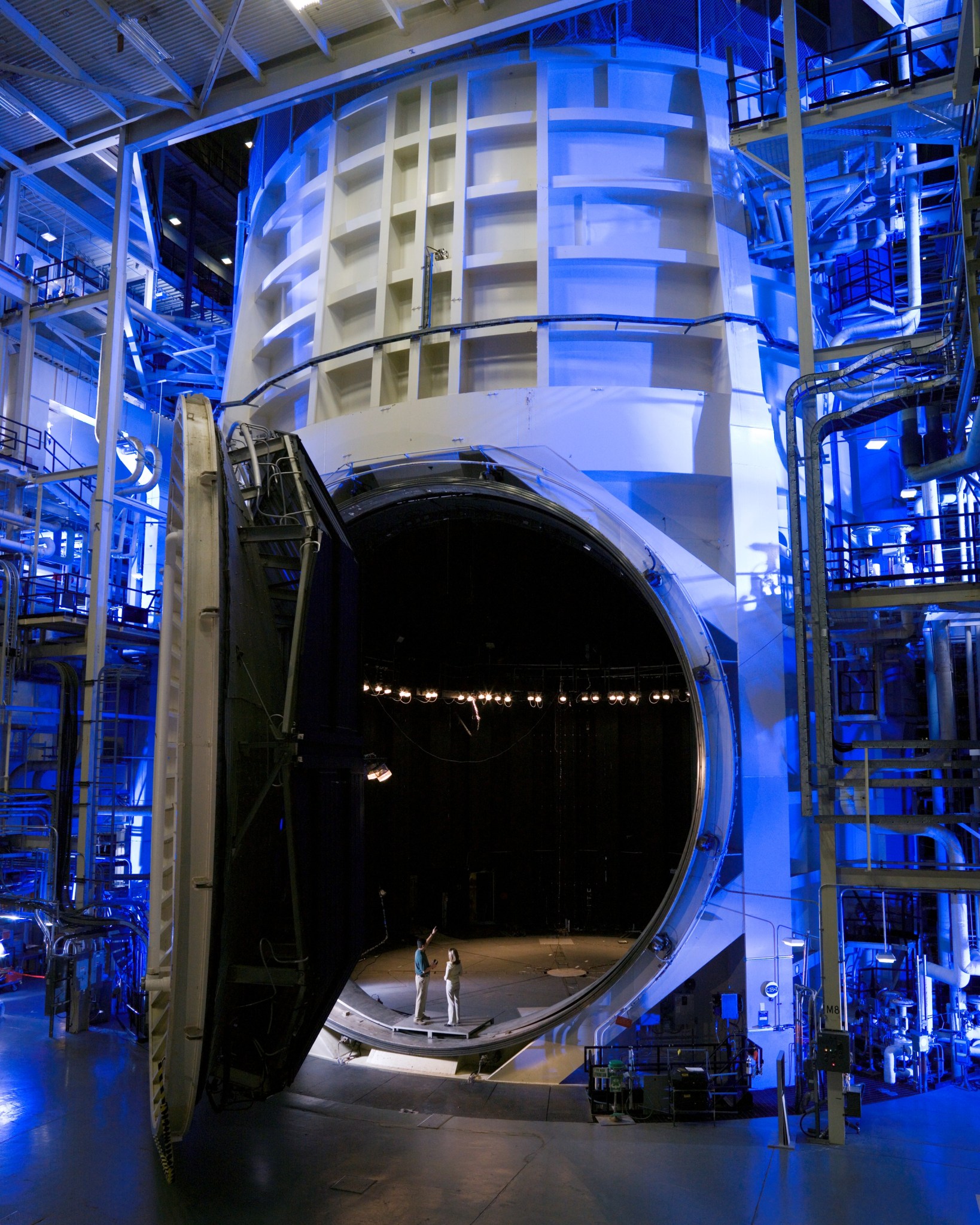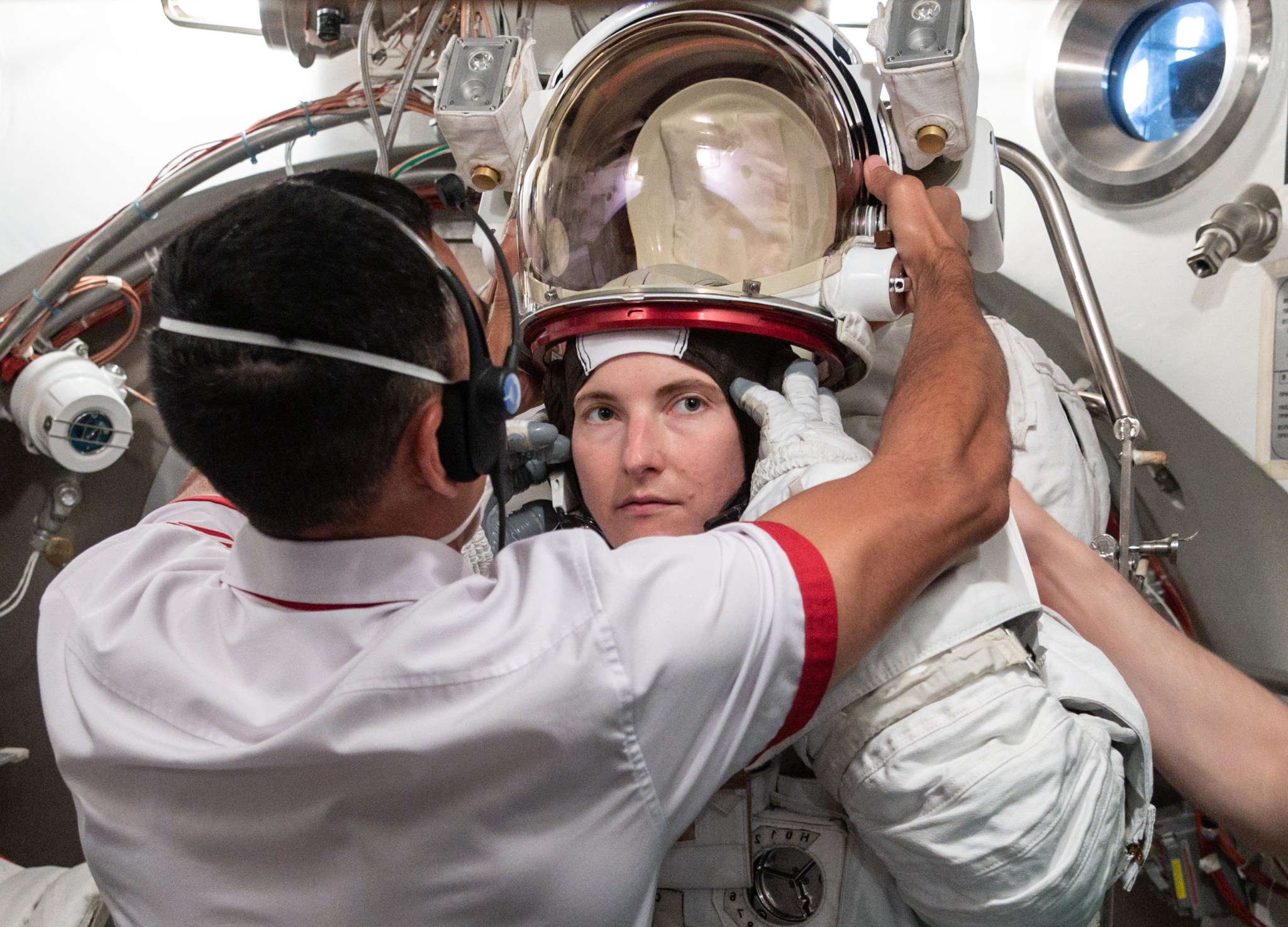Vacuum & Pressure

Introduction
Johnson Space Center (JSC) provides a wide array of space environment test capabilities. The altitude chambers are used primarily for development, certification, and parametric testing of life support systems for humans in the hostile environment of space. Each altitude chamber is configured for a particular type of testing, however, within the chamber’s capabilities, the chamber complex may be used to perform other types of tests. JSC offers a collection of unique understanding as to what works well within the harsh environment of space and what does not. Test capability is available for both manned and unmanned test environments.
JSC Thermal-Vacuum Test Facilities provide thermal-vacuum chamber test operations for both manned and unmanned test environments. The facilities offer a wide range of performance capability, which can be matched to the individual test requirements of smaller test articles (Chamber B) or large test article components (Chamber A) and subsystems. Typical uses of these chambers have included development, engineering evaluation, and qualification testing of spacecraft components, subassemblies, and experiments; preflight thermal-vacuum conditioning of flight hardware; development and calibration of instruments for use in the large chambers or in-flight; spacecraft seal studies; photographic film Emulsion studies; and optical surface contamination studies.
JSC offers lunar environmental test capabilities for subsystem and system hardware and assemblies. This capability complements existing Agency resources for both ambient dust testing and dirty thermal vacuum capability.
NASA White Sands Test Facility (WSTF) offers numerous ambient pressure and altitude simulation stands to test rocket propulsion systems, as well as single rocket engines. WSTF has extensive experience testing with hypergolic and liquid oxygen/ hydrocarbon propellants over a wide range of operating conditions. Because of its remote location and long history of supporting NASA, DoD, and commercial aerospace programs, WSTF is the only NASA facility, and one of only a few government or private industry locations in the country, capable of testing rockets with hypergolic rocket propellants. We invite our partners to leverage our unique vacuum chambers and expertise in testing to advance your spaceflight endeavors. We can tailor testing environments and configurations to meet your unique needs in advancing humankind’s presence in our solar system.
Vacuum Chambers
20-Foot Vacuum Chamber
Overview | The 20-foot chamber at NASA JSC is a human-rated vacuum chamber with an airlock and a rapid decompression chamber. The volume is divided into three levels by non-pressure bearing floors, which provide atmospheric isolation.
Details |
- Reduced Pressure Testing
- Human-rated Vacuum Environment
- Elevated Oxygen
- Rapid Decompression Testing
JSC Chamber A
Overview | Chamber A is the largest of the thermal-vacuum test facilities at JSC. The chamber’s usable test volume and high-fidelity space simulation capabilities are adaptable for thermal-vacuum testing of a wide variety of test articles, including entire space vehicles.
Details | NASA JSC Chamber A provides a high vacuum thermal chamber with a usable test volume and space simulation capabilities that are adaptable for testing entire space vehicles. The chamber can simulate low temperatures of deep space (35K) within a 55 feet diameter by 80 feet tall shroud volume. The pressure range of the chamber is from 1×10^-6 torr to 760 torr. Additional test support equipment includes mass spectrometers, infrared cameras, and television cameras. The numerous flanges at all levels provide ample pass-throughs for electrical, instrumentation, and gasses to support large systems.
JSC Chamber B
Overview | Chamber B is used for human testing in a vacuum environment and for crewed space operations testing.
Details | NASA JSC Chamber B provides space environmental testing with vacuum thermal conditions. Chamber B is a human-rated chamber equipped with a traversing monorail that provides weight relief to one suited crew member at a time. The chamber also has dual crew airlocks to provide easy access to the test articles as well as a means of transporting test crew members to the test environment and back during tests. Chamber B has an internal volume of 7.6 m (25 ft) diameter x 7.9 m (26 ft). Its usable test volume and high-fidelity space simulation capabilities are adaptable for thermal vacuum testing of a wide variety of test articles. The low temperature range of the chamber is -300° F. The pressure range of the chamber is from 1×10^-6 torr to 760 torr.
Specialized Chambers and Environmental Test Complex
Overview | Contains a collection of chambers of varying thermal & thermal/vacuum environment capabilities configured for testing hardware ranging from flight (qualification) to development hardware in support of JSC Government Furnished Equipment (GFE) activities.
Details |
- Temperature and humidity cycling
- Accurate determination of design factors
- Operating temperatures
- Changes in absorptive or emissive properties of thermal coating
- Changes in electrical or mechanical properties of materials
- Accelerated electrical or electronic components burn-ins and life-cycle testing
- Environmental cycling (thermal and humidity) for materials survivability
Vacuum Test Facilities (Altitude Chambers)
Overview | Johnson Space Center (JSC) provides a wide array of space environment simulation test capabilities. The altitude chambers are used primarily for development, certification, and parametric testing of life support systems for humans in the hostile environment of space. Each altitude chamber is configured for a particular type of testing; however, within the chamber’s capabilities, the chamber complex may be used to perform other types of tests. JSC offers a collection of unique knowledge as to what works well within the harsh environment of space and what does not. Test capability is available for both manned and unmanned test environments.
Details |
- Human-rated testing in a vacuum environment
- Space suit development testing
- Flight crew training
- Environmental control and life support system testing
- Metabolic loading to life support systems
- Parametric testing
- Emergency and mobility accommodations of suited crewmember
- Air Revitalization system testing
- Carbon dioxide removal or reduction
- Oxygen generation
- Trace contaminant control
- Materials and hardware testing in a vacuum environment
Thermal-Vacuum Human-Rated Testing
Overview | Johnson Space Center (JSC) is the world leader in human-rated testing in a simulated space environment, offering human testing in vacuum, thermal– vacuum, and vibration environments. JSC offers a collection of unique knowledge and experience as to what works well within the hostile environment of space and what does not. This knowledge is available to support crewed spacecraft and space system hardware design reviews and flight– like simulation of Extravehicular Activity (EVA) operations in pressures ranging from vacuum to one atmosphere.
Details |
Human-rated hardware testing in vacuum and thermal–vacuum environments
- Space suit development testing
- Flight crew training
- Environmental control and life support system testing
- Metabolic loading to life support systems
- Parametric testing
- Emergency and mobility accommodations of suited crew person
Human-in-the-loop air revitalization system testing
- Carbon dioxide (CO2) removal or reduction testing
- Oxygen (O2) generation testing
- Trace contaminant control testing
Human-rated vibration testing
- Thermal analysis, including human thermal modeling
Thermal Vacuum Testing
Overview | Johnson Space Center (JSC) Thermal Vacuum Test Facilities provide thermal vacuum chamber test operations for both manned and unmanned test environments. The facilities offer a wide range of performance capability, which can be matched to the individual test requirements of smaller test articles or large test article components and subsystems. Typical uses of these chambers have included development, engineering evaluation, and qualification testing of spacecraft components, subassemblies, and experiments; preflight thermal– vacuum conditioning of flight hardware; development and calibration of instruments for use in the large chambers or in– flight; spacecraft seal studies; photographic film emulsion studies; and optical surface contamination studies.
Details |
- Human-rated space environmental testing
- Materials outgassing evaluations
- Accelerated electrical and electronic component burn-ins and life-cycle testing
- Environmental cycling (thermal and humidity) for materials survivability
- Materials and hardware testing in extreme environments (manned and unmanned)
- Determination of design factors
- Operating temperatures
- Combined thermal and pressure-load distortions of dimensionally critical structural elements
- Fluid and gas leak rates
- Changes in absorptive or emissive properties of thermal coating
- Evolution of harmful or undesirable offgassing products
- Presence of conditions conducive to electrical arc or corona discharge
- Thermal analysis, including human thermal modeling
“Dirty” Chambers
15-foot Dirty Thermal Vacuum Chamber
Overview | NASA JSC 15-foot dirty thermal vacuum chamber (TVAC) provides unique testing capabilities for dust and planetary surface environments. The 15-foot chamber is a spherical chamber designed to test advanced concepts, especially for battery power systems, space vehicle actuators and auxiliary power units.
Details |
- 12.5-foot internal diameter spherical chamber with ~78-inch diameter clear entry for easy access
- Vacuum conditions: 1×10^-6 torr to 760 torr
- Thermal conditions: -196°C to +120°C
- Air, GN2 pressurization
- Feed-throughs for high-power electrical connections and high-channel count data
- Control automation enabling low-cost operations
- Ambient dust containment room for regolith control and testing
- Hardware exposure testing to dust / regolith
- Regolith bin for design and test of excavation, processing, or construction technology
Regolith Simulant Component Test Lab
Overview | The Component Test Lab offers multiple small vacuum environments for testing in simulant and a simulant dispersal test box with ambient dispersal capabilities.
Details |
- Multiple 1’-3’ thermal vacuum bell jars for testing with simulant
- Ambient 2’ x 2’ x 3’ dust box for quick and easy functional testing with fan-blown simulant
Pressurized System Testing
Pressure System Testing
Overview | NASA JSC has expertise in the design, fabrication, build, and test of vehicle-level integrated pressure systems.
Details |
- High-pressure hydrostatic proof and burst
- High-pressure pneumatic proof and burst
- Inflatable proof and burst
Propulsion Testing
Overview | White Sands Test Facility (WSTF) offers numerous ambient pressure and altitude simulation stands to test rocket propulsion systems, as well as single rocket engines. These facilities maintain extensive experience testing with hypergolic and liquid oxygen/hydrocarbon propellants over a wide range of operating conditions.
Details | Altitude Testing: WSTF has six test stands that provide simulated altitude greater than 100,000 ft for engines and engine systems with thrust levels up to 25,000 pound-force (lbf). Horizontal and vertical firing configurations are available.
Ambient Testing: Three test stands at WSTF support ambient firing at 5000 ft (1500 m) above sea level. Rocket engines with thrust levels up to 60,000 lbf. (270 kN) can be tested. Horizontal and vertical firing configurations are available.
Propellants: Propellants available for testing at WSTF include liquid hydrogen, gaseous and liquid oxygen, hydrocarbon, hydrazine, Aerozine-50, monomethyl hydrazine (MMH), nitrogen tetroxide (N2O4), gaseous and liquid methane, and solid rocket propellants. Propellant saturation and temperature conditioning are available. Pressurants include nitrogen and helium.
Hypergolic Propellant Handling: WSTF can dispatch propellant handling teams to support projects at any location. Hypergolic propellants such as hydrazine, monomethyl hydrazine, nitrogen tetroxide, and unsymmetrical dimethylhydrazine have been used and stored at WSTF since 1964.
Propellants and Aerospace Fluids Testing and Analysis
Overview | White Sands Test Facility (WSTF) performs testing that enables aerospace fluid and propulsion system designers to evaluate the risks and hazards associated with potential and existing materials, components, and system configurations.
Details | The White Sands Test Facility (WSTF) performs laboratory-scale experiments and tests to determine and verify the properties of aerospace fluids. Tests include micro-calorimetry and accelerated rate calorimetry, flash point, fire point, differential scanning calorimetry, inductively coupled plasma-mass spectroscopy (ICP-MS), Fourier transform infrared spectroscopy (FTIR), adiabatic compression, and thermal runaway. Testing is performed on exposed and nonexposed materials per applicable NASA, military, and American Society for Testing and Materials (ASTM) standards to determine how fluid exposure affects the material’s properties. Testing can consist of exposure to any of the fluids and properties can vary depending on the type of material being evaluated (soft good, metal, ceramic, lubricant, or other materials). Testing includes tensile strength, flexure, compression set, and hardness. Composition and glass transition temperature are tested when polymers are the subject material. Posttest analysis of fluids is performed after exposure to determine how material exposure may affect fluid specifications and performance. WSTF designs free-field blast experiments up to 230-kilogram (kg) trinitrotoluene (TNT) equivalency and small-scale experiments to assess the hazards associated with a variety of high-energy release mechanisms. These energy releases can be the result of thermochemical reaction, such as with explosives and propellants; the rupture of gas or fluid storage vessels at high pressures, or both. WSTF hydrogen test facilities are designed to allow gaseous tests to be conducted at pressures up to 6,000 psi and at flow rates up to 5 pounds per second. Materials and component tests can be conducted with hydrogen in both the gaseous and liquid state. WSTF can provide in-person training to personnel handling hypergolic propellants, oxygen, and hydrogen medias. Classes are tailored to the individual audience and can vary from intense classroom discussions of new chemical analytical techniques to field training with Level-A, totally encapsulating suits (TES).
Composite Overwrapped Pressure Vessels
Overview | White Sands Test Facility (WSTF) tests and evaluates composite overwrap pressure vessels (COPVs) and components through studying damage tolerance and stress rupture. It also offers leading expertise in both destructive and nondestructive evaluation, training, analysis, and development of life extension protocols for composite structures.
Details | White Sands Test Facility (WSTF) offers leading expertise in the testing, nondestructive evaluation, training, and analysis of composite structures. WSTF engages in the test and evaluation of structures by performing mechanical damage tests, sustained load testing, material compatibility, and hydraulic and pneumatic burst tests to understand and evaluate environmental effects on pressurized systems.
Damage Detection Course
A two-day damage detection course is offered to qualify aerospace visual inspectors of flight composite pressure vessels and provides comprehensive working knowledge of composite overwrap pressure vessel (COPV) technology. The course focuses specifically on mechanical damage, safe life, sustained load, and propellant/fuel exposure effects on pressure vessels built using graphite/epoxy composite filament wound onto metallic liners.

































